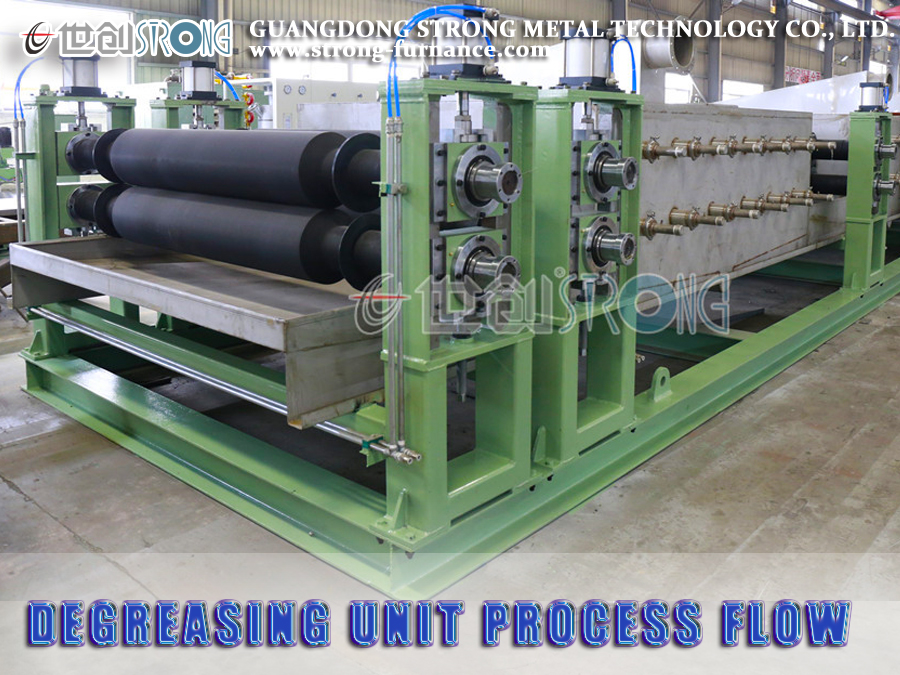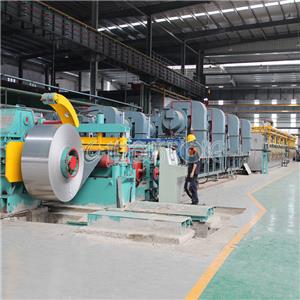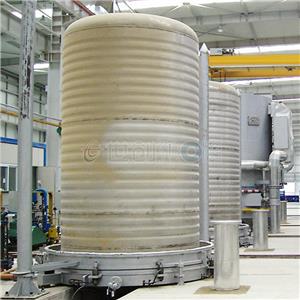Degreasing unit process flow
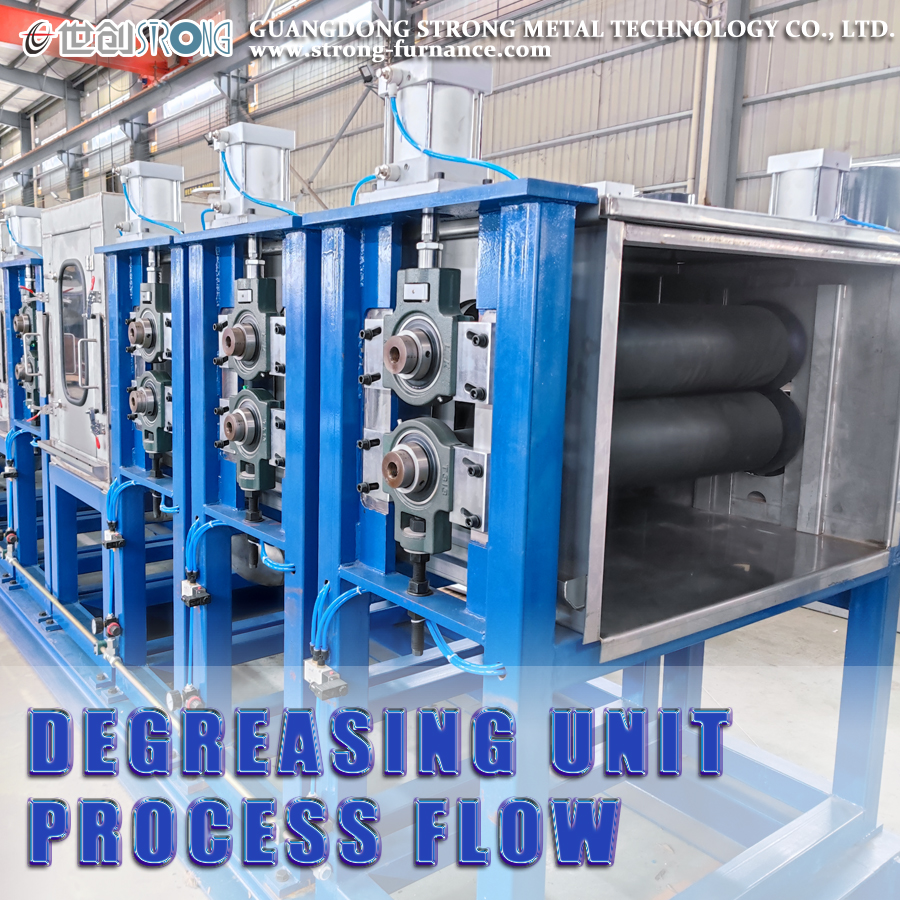
During the rolling process of cold-rolled strip steel, palm oil or similar synthetic oil is usually used as a lubricant for process needs. This lubricant will leave an oil film on the surface of the strip steel. When this oil film is annealed in the annealing furnace, carburization and residue will occur due to heating and decomposition, affecting the composition and surface cleanliness of the strip steel, and then affecting the quality of subsequent processing. The function of this unit is to use chemical and electrochemical methods to clean the surface of the strip steel to meet the quality requirements of subsequent processing.
The electrolytic degreasing unit can also unwind the cold-rolled steel coil, cut off the extra-thick part of the tail of the strip steel, adjust the weight of the steel coil, and coil it with appropriate tension.
The steel coil is transported to the unwinding machine drum by a trolley and is actively unwound under the drive of the motor. It is sent to the shearing machine through the clamping machine, and the inlet shearing machine cuts off the extra-thick part or damaged part of the strip steel. The prepared strip head is welded to the tail of the previous strip steel, and the tail of the strip is controlled by the tensioner to stay in the appropriate welding position during welding.
After welding, the strip enters the degreasing process. Degreasing is divided into chemical degreasing and electrolytic degreasing. Chemical degreasing is used to wet and preliminarily degrease the strip to remove surface oil stains. After chemical brushing, the strip enters the electrolytic degreasing section. Chemical degreasing is essentially to remove grease from the surface of the strip by saponification and emulsification. Electrolytic degreasing is to use the strip as a cathode or anode, and use the powerful emulsification effect of a large number of bubbles generated on the surface of the strip to enhance the degreasing process. At the same time, the strip that is energized produces electrode polarization, reduces the interfacial tension between the strip and the alkali solution, and accelerates the grease stripping process. The cleaned strip enters the exit section after brushing, rinsing, and drying.
The exit section is equipped with a tensioner to provide appropriate coiling tension. The strip can also be coiled by the exit shear to achieve the expected weight. The coiler coils the strip in a floating manner to provide a neat strip edge.
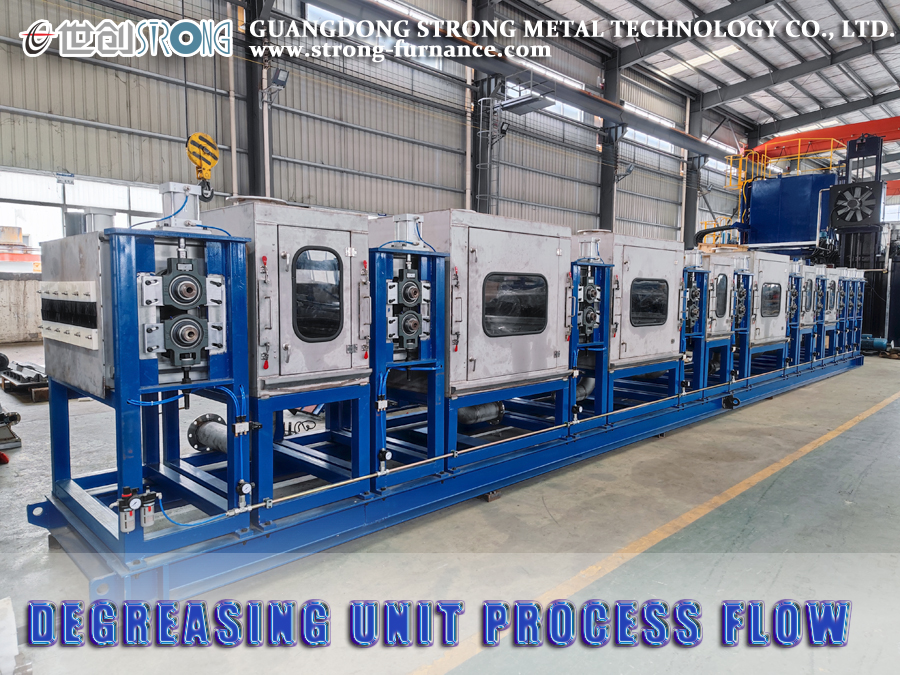
The oil stains encountered during the rolling process of cold-rolled strip steel are generally three types of oils: mineral oil, vegetable oil and animal oil. According to their chemical properties, they can be divided into saponifiable oil and non-saponifiable oil. All animal and vegetable oils are saponifiable oils. These oils react with alkali to form soap, so they are called saponified oils. Mineral oils are all non-saponifiable oils.
Generally, in small-scale production, organic solvent degreasing and manual degreasing can be used, but these methods are not applicable in large-scale production. At present, alkaline solution degreasing and electrochemical degreasing are used in large-scale industrial production. This unit uses these two methods.
(1) Alkaline solution degreasing
Alkaline solution chemical degreasing is essentially carried out with the help of saponification and emulsification. The former can remove animal and vegetable oils, and the latter can remove mineral oils. As long as the process conditions are selected appropriately, it is not difficult to remove these two types of oil stains.
The removal of animal and vegetable oils in oil stains depends on saponification reaction. The so-called "saponification" is the process in which oil and alkali in the degreasing liquid react chemically to form soap. The main component of animal and vegetable oils is stearin. The soap and glycerin generated by its reaction with alkali are both soluble in water. Mineral oil does not saponify with alkali, but under certain conditions it can be "emulsified" in alkaline solution. The so-called "emulsification" means that the oil film on the surface of the steel strip can be transformed into many small oil droplets, which are dispersed in the alkaline solution to form a mixture, which we call "emulsion". The emulsification effect is mainly caused by the reduction of interfacial tension. In order to quickly remove oil stains, people add emulsifiers to alkaline solutions. The role of emulsifiers is that it can not only adsorb on the interface between oil and solution, thereby reducing interfacial tension, but also adsorb on small oil droplets that have been separated from the surface of the strip to form an adsorption film, so that the small oil droplets will not collide with each other to form an oil film again.
When the strip passes through a cleaning tank filled with alkaline solution, the strip is used as an anode or cathode under the condition of direct current. The method of degreasing is called electrochemical degreasing, also known as electrolytic degreasing. Usually, steel plates are used as auxiliary electrodes, which only play a conductive role. Production practice has proved that the speed of electrochemical degreasing is often several times higher than that of chemical degreasing, and the oil stains are removed more cleanly, which is inseparable from the characteristics of the electrochemical degreasing process. We have observed that during electrochemical degreasing, whether the strip is used as the cathode or the anode, a large amount of gas is precipitated on its surface. The essence of this process is the electrolysis of water: when the strip is used as the cathode, a reduction process is carried out on its surface and hydrogen is precipitated; when the strip is used as the anode, an oxidation process is carried out on its surface and oxygen is precipitated. The precipitation of a large amount of gas on the surface of the electrode and the strip will have a strong emulsifying effect on the oil film.
The mechanism of the electrolytic degreasing process can be briefly described as follows: When the strip passes through the electrolytic degreasing tank, the interfacial tension between the oil and the alkali solution is reduced, and cracks are generated in the oil film. At the same time, the electrode is polarized due to the power supply. Although electrode polarization has little effect on non-ionic oils, it greatly reduces the interfacial tension between the strip and the alkali solution, thus quickly increasing the contact area between the two (the wettability of the alkali solution to the strip increases), thereby removing the oil attached to the metal surface and further breaking the oil film into small oil droplets. Due to the action of the current, small bubbles (hydrogen and oxygen) are generated on the surface of the strip, and these bubbles become larger and leave the strip with the oil droplets.
It can be seen that the electrolytic degreasing process is a combination of electrode polarization and the mechanical tearing effect of gas on the oil film.
Another important condition to ensure the smooth progress of the electrolytic degreasing process is the current density.
The selection of current density should ensure that a sufficient amount of bubbles are precipitated, which can not only mechanically tear off the oil droplets, but also stir the solution. If the oil on the surface of the strip is certain, the current density is large and the oil removal speed is fast. Of course, it cannot be increased indefinitely, because this relationship is not always in direct proportion. When the current density reaches a certain level, the oil removal speed will not increase so fast, but will cause the tank voltage to be too high, resulting in too much power consumption.
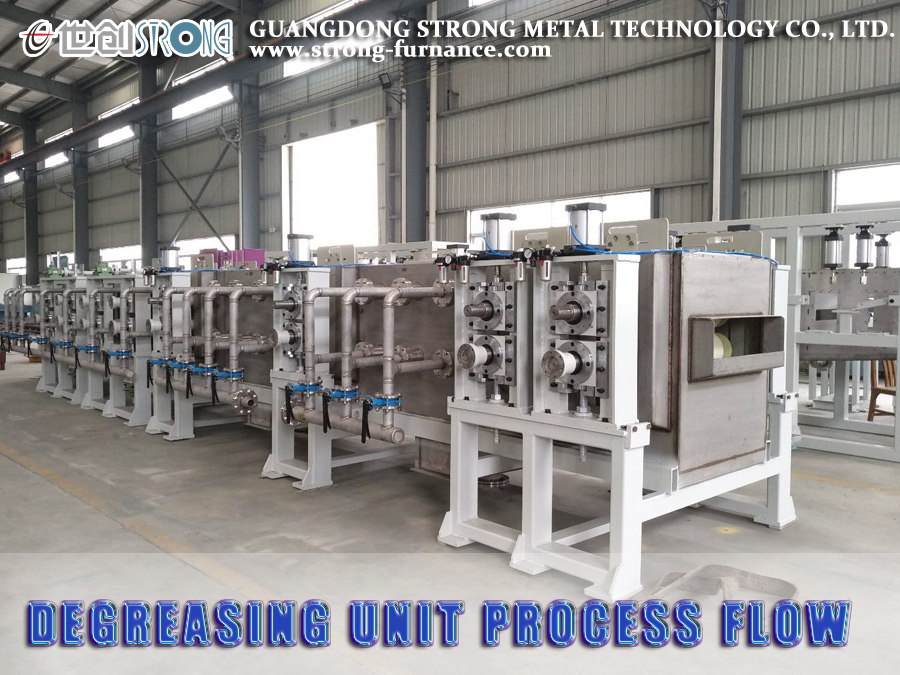
The cathode degreasing speed is faster because when the current density is the same, the volume of hydrogen precipitated on the cathode is twice the volume of oxygen precipitated on the anode, and the number of bubbles is large and small, so its emulsification ability is large. In addition, due to the discharge of H+, the pH value of the liquid on the cathode surface increases, which is also beneficial to degreasing. During anode degreasing, the oxygen bubbles are large, and the pH value of the surface liquid decreases after OH- discharge, so the degreasing speed is slow. In addition, the two degreasing methods have their own shortcomings. When used as a cathode, a large amount of precipitated hydrogen can diffuse into the metal and cause hydrogen embrittlement. On the other hand, oil impurities will be adsorbed on the cathode plate. When used as an anode, although there is no problem of hydrogen embrittlement, the precipitated oxygen promotes oxidation of the metal surface and even oxidizes some oils. In view of the advantages and disadvantages of the anodic process and the cathodic process, the combination of these two processes is often used in production today, which is called "combined electrochemical degreasing".
The process adopted by this unit is the "intermediate conductor method", that is, in the absence of metal contact, the current is transmitted from the electrode through the electrolyte to the strip, then through the strip, and then through the electrolyte to the opposite electrode. The cleaning of the electrode is carried out by polarity conversion.
Strong Metal’s customized New Design Continuous Degreasing Line
The degreasing line is for cleaning with a cleaning agent to remove the residue and the water is squeezed out and dried to ensure that the steel strip is clean before entering the annealing furnace;
Product Descrption:
1) online/offline
2) with driving terminal
3) PLC control system
4) degreasing section, water cleaning section and drying section
Specification:
Type: Horizontal
Heating method: Electricity or furnace heat resuse
Max. output: 300MT/day
